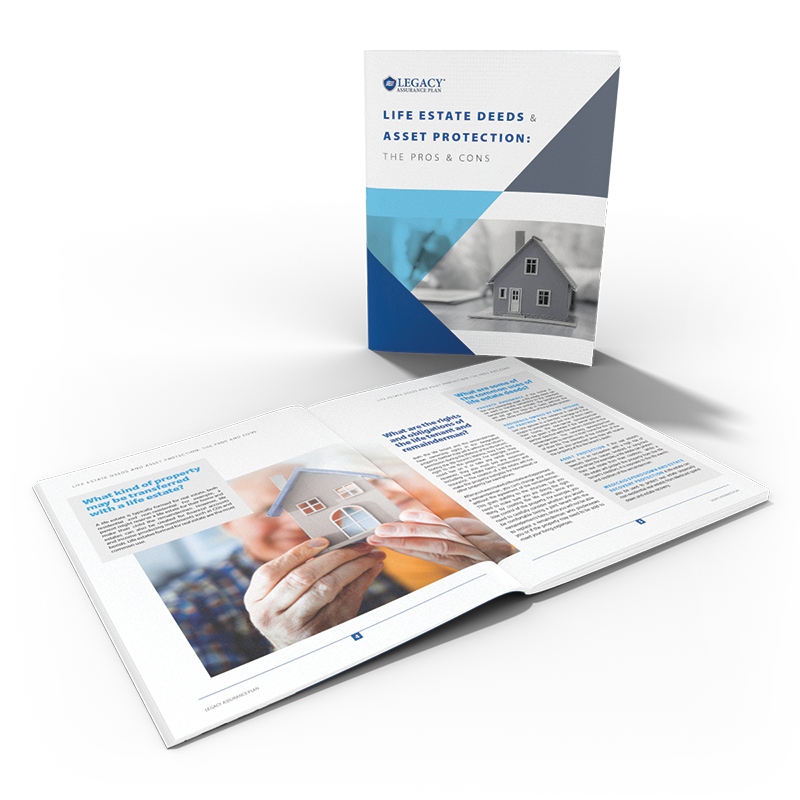A life estate is a form of joint ownership that gives a person (the life tenant) and a beneficiary (the remainderman) ownership rights in the property. The life tenant has the sole right to occupy and use the property during their lifetime. When the life tenant dies, the property is fully owned by the remainderman without any probate process being needed. The remainderman can be an individual, multiple people, an irrevocable trust or other entity. Life estates are often created by deed as a probate-avoidance method. For example, a parent could record a deed that creates a life estate in order to give their house to their child but retains the right to remain living there during the parent's lifetime.
What are the common uses of life estates?
Life estates are used to address a number of situations.
Probate avoidance
Residence owned by only one spouse or partner
Asset protection
Medicaid spend down and estate recovery protection
What are the pros and cons of life estates?
| Pro | Con | |
|---|---|---|
| Avoid probate | ✓ | |
| Possible life tenant tax breaks | ✓ | |
| Remains qualified for homestead property tax exemption | ✓ | |
| Remainderman capital gains tax advantages | ✓ | |
| Potential effect of remainderman financial problems | ✗ | |
| Effect on financing | ✗ | |
| Remainderman's heirs if remainderman dies first | ✗ | |
| Medicaid impact | ✓ | ✗ |
What about life estates and Medicaid?
Life estates are frequently used to prepare for Medicaid eligibility and estate recovery. A life estate deed can be used to protect the home or other real estate from loss to the cost of nursing home care while qualifying the life tenant for Medicaid.
Life estate deeds can provide a way to divest yourself of real estate (countable assets) yet keep the right to use it for your lifetime and preserve them to be inherited by your family. If you transfer real estate while reserving a life estate, for purposes of Medicaid means-testing, you no longer own the property, so its value can't be counted against you when seeking Medicaid benefits. As a non-countable asset, the real estate does not need to be spent down to qualify you for Medicaid.
There are pos and cons to using a life estate deed to qualify for Medicaid.
Pro: In order to use Medicaid, you must show limited property under their rules. Owning a real estate or getting proceeds from its sale may disqualify you. If you set up a life estate, however, the property will not count against your Medicaid eligibility.
Pro: Real estate is protected from spend down and estate recovery.
Con: If you set up the life estate within five years before you applied for Medicaid, the transfer may be penalized, delaying your Medicaid eligibility.
Con: If you need to sell the property to pay for living expenses other than long-term care, you will not receive all of the sales proceeds.



